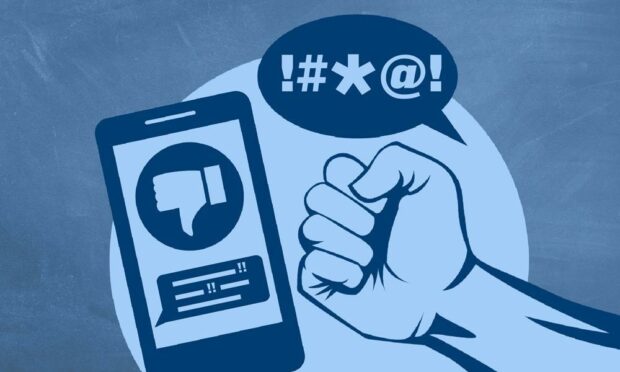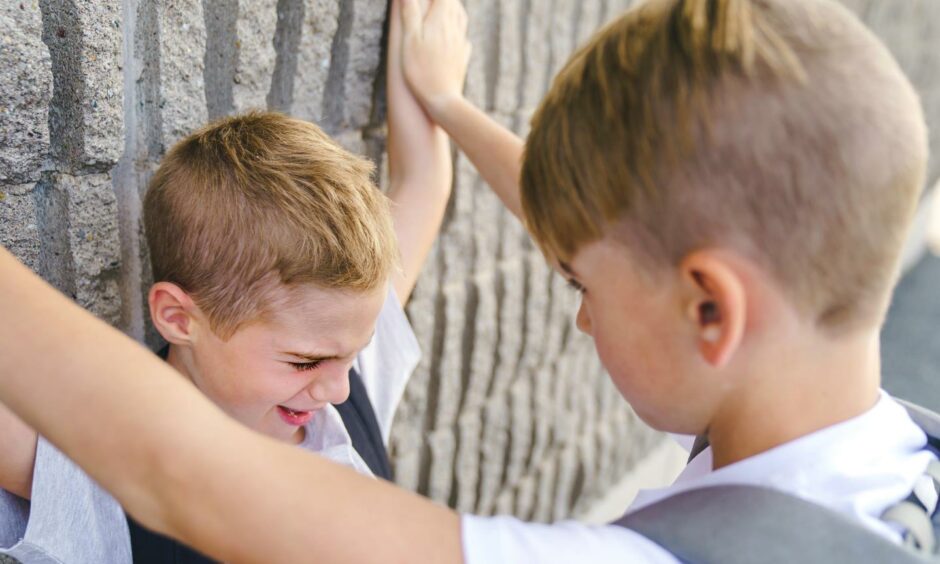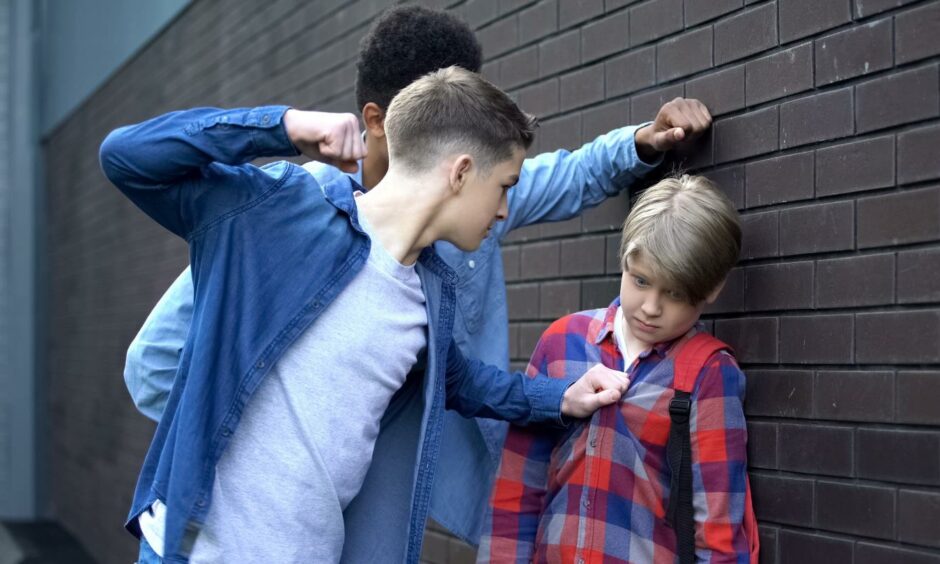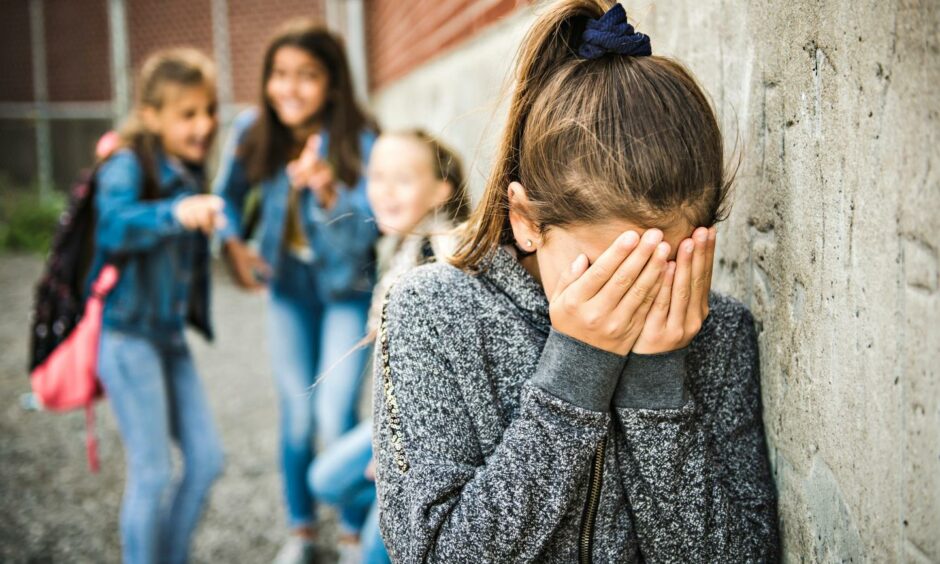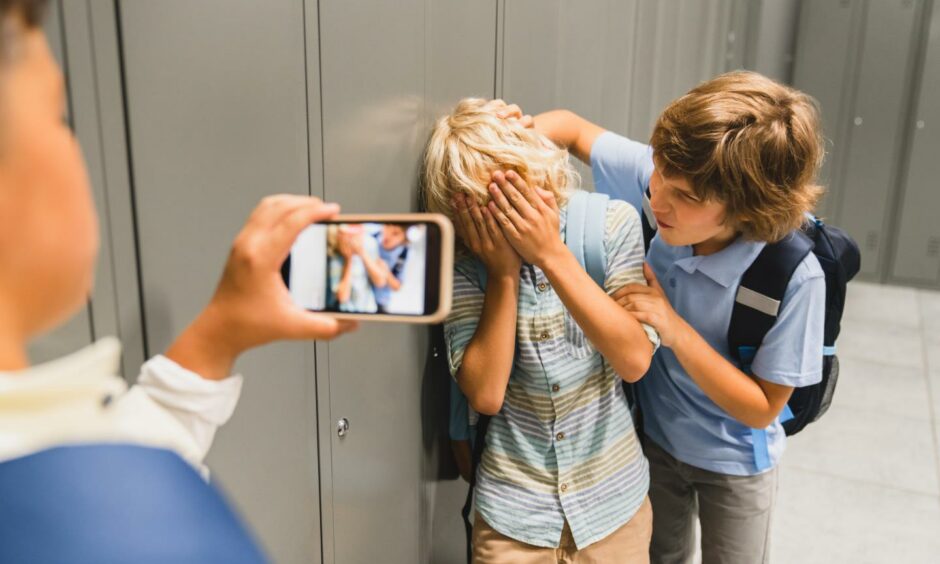Bullying has many forms and it can feel different to every child. However there are common types of bullying to look out for.
The Anti-Bullying Alliance describes bullying as the “repetitive, intentional hurting of one person or group by another person or group, where the relationship involves an imbalance of power.”
Bullying, however, does not always have to be intentional.
Actions of an individual may be intended as a joke and they may not be aware that their behaviour is bullying.
They may not understand their actions are wrong however the effect on the victim may be no less severe.
Bullying in Tayside and Fife
The Courier is investigating bullying in our local schools after parents told us of the harrowing experiences their children have faced.
We launched a survey to hear the real experiences of bullying in our schools.
In one of our case studies, we tell the story of a Fife girl who told her parents she “wanted to die” at the age of seven following years of bullying.
Types of bullying
Bullying can include physical assault, teasing, threats and name calling.
And in recent years, bullying has followed children online, on their phones and tablets, making it almost impossible to escape.
So what are the main types of bullying?
Physical
This can include hitting, kicking, pushing or spitting.
Physical bullying is an intentional act to harm the victim to make them fear their attacker.
Deliberately stealing, damaging or hiding another’s belongings can also be considered physical bullying.
It is often the easiest type of bullying to spot.
Verbal
Verbal bullying typically involves repeated name calling, spreading rumours and threatening another person.
It is thought to be the most common type of bullying.
And bullies often start out with verbal taunts before it escalates to physical.
Bullies often pick on insecurities of the child they are targeting, which can heighten the power imbalance.
Social
One of the most common types of bullying, social bullying involves isolating or excluding others.
It can also involve ridicule, humiliation or spreading rumours and repeatedly excluding someone from the group.
Commonly, other children are encouraged by the bully to join in on the exclusion.
Peer pressure can result in the bullied child’s friends turning against them, in fear that it may happen to them.
False friendships, where someone pretends to be your friend but actually uses their power to bully you, is a common type of social bullying in schools.
It can be difficult to identify because the victim and perpetrator may appear friendly in many circumstances.
And the victim may not realise or understand that this behaviour is not typical of a friendship.
The ‘friend’ may make the victim feel worthless, such as constantly putting them down or making them do things to justify their friendship.
Banter or bullying?
It is important to identify the difference between banter and bullying, especially when you suspect false friendships are involved.
Banter, according to the Anti-Bullying Alliance, is “playful where both parties find it funny”.
Bullying, on the other hand, is repetitive, hurtful and often involves a power imbalance.
When a child is being bullied by someone they believed was their friend, it can be even more hurtful.
Prejudicial
Bullying which targets someone for who they are – including their sexuality, gender, religion or race – is becoming more prominent.
It can include the bully targeting someone and repeatedly making homophobic, transphobic, racist or xenophobic remarks.
Sexual
Sexual bullying can involve unwanted physical contact, inappropriate touching and abusive comments.
Children may find it hard to report this type of bullying because of embarrassment or fear.
It can also relate to sharing sensitive images without the consent of the person in the photographs.
Coercing or pressuring someone to send images or messages of a sexual nature can also be classed as bullying.
Cyberbullying
Bullying has also moved online and can include social media posts which target an individual.
Cyberbullying has the ability to reach a wider audience and it can be extremely difficult to have a post or image removed from the web completely once it has been shared.
It therefore can have a lasting impact on the target.
Anyone who witnesses bullying should report the incidents to a relevant authority, such as teachers, police or parents.
Scotland’s anti-bullying service RespectMe offers guidance for young people who are experiencing bullying and their parents and teachers.
If you feel like the bullying you witnessed at school or online was a hate crime, you can also report it to Police Scotland via 101.
Childline support young people with any worries they may experience, including mental health and bullying.
They can be contacted confidentially on 0800 11 11 or use their free 1-2-1 counselling service.
Read more from our bullying series
- ‘Mummy I just want to die’: Devastating words of Fife girl, 7, after years of bullying
- Bullying in schools: Our survey reveals 9 in 10 parents do not think schools can effectively tackle it
- Bullying advice: How to help children who are being bullied
- Autistic Angus teen terrified to go to school after pupil threatens to ‘kill him’
- How to report bullying to school and the police
- OPINION: I attempted suicide after years of bullying – schools need to take it seriously
- Devastating effects of bullying on children in the short and long term
